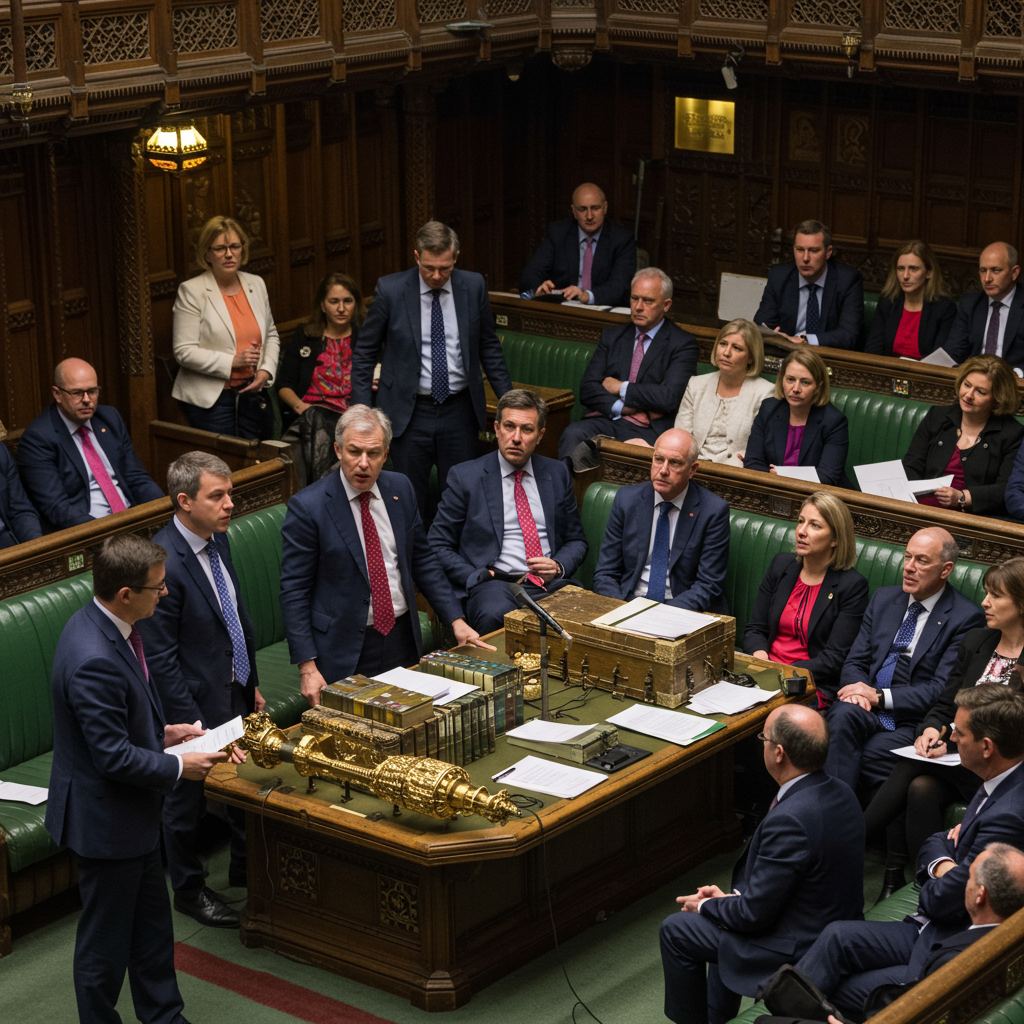In a significant departure from conventional American political discourse, former President Donald Trump recently offered a controversial defense of Hamas’s actions in the Gaza Strip. These remarks, made in late 2025, stunned many observers. Trump’s comments seemingly legitimized the group’s violent crackdowns against alleged rivals. This stance raises critical questions about his motivations, his perspective on global conflicts, and the broader implications for international relations. This analysis explores the specifics of Trump’s statements, the potential underlying reasons, and the wider context of his Middle East diplomacy.
Trump’s Unprecedented Defense of Hamas Actions
Open support for Hamas has historically been confined to the far left in the United States. However, President Donald Trump recently introduced a startling new narrative. On October 13, 2025, responding to reports of Hamas reasserting control in Gaza by executing rivals, Trump explicitly approved these actions. He framed them as a legitimate effort to combat crime. This position marks a dramatic shift in how a major American political figure addresses a designated terrorist organization.
The “Crime-Fighting” Justification
When questioned about Hamas’s lethal campaign against dissidents, Trump indicated he was “undisturbed.” He characterized the group’s actions as “merely cracking down on crime.” He further suggested these efforts had “American approval for a period of time.” Trump asserted that Hamas sought “to stop the problems.” He explained this was necessary to prevent “big crime or some of the problems that you have when you have areas like this that have been literally demolished.”
Adding more detail to his defense, Trump elaborated in subsequent remarks. He confirmed that Hamas “did take out a couple of gangs that were very bad—very, very bad gangs.” He stated, “And they did take ’em out. And they killed a number of gang members. And that didn’t bother me much, to be honest with you. That’s okay. A couple of very bad gangs.” This candid acceptance of extrajudicial killings by Hamas deeply concerned many international observers and human rights advocates.
Beyond Traditional US Policy
Trump’s comments starkly contrast with long-standing US policy. The United States has consistently condemned Hamas as a terrorist organization. US policy typically denounces any group using violence against political rivals. This recent endorsement by Trump therefore represents an extraordinary pivot. It raises questions about consistency and the future direction of American engagement in the Middle East. Such statements risk eroding the moral authority the US typically asserts on issues of human rights and due process.
Unpacking Trump’s Motivations: A Dual Perspective
Why would a former US president praise a group like Hamas as “crime-fighting guardians of public order”? Two main explanations emerge from analyses of his statements and past behavior. Both involve his personal political agenda and a consistent ideological outlook. These factors likely influenced his surprising stance.
Safeguarding the Gaza Ceasefire Deal
One primary motive appears to be Trump’s deep investment in a Gaza ceasefire deal he had recently brokered between Israel and Hamas. This pact was finalized after intense negotiations. Trump took personal credit for ending the Israeli war on Gaza, envisioning a “new Middle East” and a “historic dawn of a new Middle East” following the deal’s signing in Sharm el-Sheikh, Egypt. Hamas agreed to release remaining Israeli hostages under this deal. However, the group showed reluctance to relinquish power as part of the broader political transformation the agreement sought.
Analysts suggest Hamas’s “frantic campaign of murder and intimidation” against alleged “gangsters and gangs” serves a strategic purpose. These targets are often anti-Hamas armed groups and dissidents, some with ties to Israel. Their elimination helps Hamas solidify its authority. Admitting that this internal violence undermined the prospects for lasting peace would challenge Trump’s narrative. It would contradict his claim of achieving a “historic truce.” Therefore, his defense of Hamas can be seen as a “reflexive brushing off” of any news that might diminish his perceived diplomatic success. His intervention was even credited with convincing Hamas to take the deal seriously after a crucial phone call between Netanyahu and Qatar’s PM, suggesting Hamas believed Trump could “stand up to Netanyahu.”
A Pattern of Praising Authoritarianism
A second, more troubling explanation points to Trump’s consistent admiration for authoritarian tactics. Critics suggest he genuinely struggles to differentiate between legitimate crime-fighting and oppressive crackdowns. This pattern is not new. In 1990, he praised China’s forceful suppression of the Tiananmen Square protests to Playboy, calling it “vicious” and “horrible” but highlighting “the power of strength.” He has historically lauded autocrats like Vladimir Putin, Kim Jong Un, and Recep Tayyip Erdoğan for their strong-arm rule.
More recently, he praised Egyptian dictator Abdel Fattah el-Sisi for his “tough-on-crime” stance. Trump recounted Sisi saying, “‘What do you mean crime? We don’t have crime.’ Because if he has crime, he puts it out very quickly.” This reveals a preference for swift, undemocratic measures over due process. Rather than recoiling at extrajudicial street justice, Trump seems inclined to praise Hamas for being “tough on crime,” aligning with his broader appreciation for displays of decisive, unchecked power. This perspective is a recurring theme in his political rhetoric and comments on global leadership.
The Broader Context of Trump’s 2025 Middle East Vision
Trump’s controversial comments about Hamas did not occur in isolation. They were part of a larger diplomatic effort in late 2025. He visited Israel and Egypt, receiving a “hero’s welcome” despite significant casualties in Gaza from previous conflicts. He spoke at the Israeli Knesset and participated in a ceasefire signing ceremony in Sharm el-Sheikh. During these appearances, Trump took personal credit for ending the Israeli war on Gaza. He asserted that this marked the beginning of a peaceful era for the region.
Orchestrating a “New Middle East”
Trump articulated a vision of a “new Middle East” – one that is stable, prosperous, and aligned with Washington and Israel. He declared the ceasefire as “the end of an age of terror and death and the beginning of the age of faith and hope and of God.” He hailed it as “the historic dawn of a new Middle East,” presenting the Gaza agreement as a comprehensive solution. He also championed expanding the Abraham Accords, foreseeing many more Muslim and Arab nations joining. He claimed economic advantages for those who participated.
However, critics, including Palestinian rights advocates, cautioned against this overly optimistic view. They stressed that lasting peace requires an end to Israeli occupation and subjugation. They pointed to continued Israeli attacks and settlement expansion as ongoing obstacles. Trump’s message to Palestinians was notably brief. He urged them to focus on “stability, safety, dignity and economic development” and to “turn forever from the path of terror and violence.” He made no acknowledgment of Israeli actions, displacement, or occupation, which the International Court of Justice has termed apartheid.
Personal Investment and Diplomatic Maneuvers
Trump’s strong support for Israeli Prime Minister Benjamin Netanyahu was also evident. Netanyahu faced domestic corruption charges at the time. Trump publicly called for Netanyahu’s pardon, downplaying allegations of bribery. He lauded Netanyahu as “one of the greatest wartime leaders.” This personal investment in key regional figures underpinned his diplomatic approach.
Furthermore, Trump acknowledged growing international pressure against Israel due to “horrific atrocities in Gaza.” He noted that several Western allies had recognized a Palestinian state. He congratulated Netanyahu for choosing the “victory” of a ceasefire, suggesting it was “brilliant” timing to protect Israel’s global image. These remarks underscore Trump’s pragmatic, deal-making approach, where justifying Hamas’s actions might have been seen as a necessary expedient to maintain the fragile peace he claimed to have engineered.
Distinguishing “Law Enforcement” from Brutality
Trump himself attempted to draw parallels between Hamas’s actions and his own administration’s approach to crime. He suggested, “You know, it’s no different than other countries. Like, Venezuela sent their gangs into us, and we took care of those gangs. We have Washington, D.C.—it’s one of the safest cities in the country. It was one of the worst cities in the country if you go back just a little while ago.”
Comparing US Actions to Hamas Tactics
This comparison, however, is fundamentally flawed and misleading. While American cities might see deployments of the National Guard or extensive law enforcement crackdowns, U.S. soldiers do not summarily execute people on the streets. American legal systems, however imperfect, involve due process and accountability. Even widespread abuses associated with actions like ICE crackdowns fall far short of “Hamas-level brutality.” The US system is designed, in principle, to uphold human rights and legal procedures.
The Slippery Slope of Political Justification
Trump’s cavalier acceptance of Hamas’s horrors and his instinct to equate them with domestic US law enforcement are highly revealing. It demonstrates a willingness to see “crime-fighting” as a valid pretext for the “naked murder of political rivals.” This perspective indicates a concerning lack of distinction between legitimate state force and the “unaccountable cruelty exercised by one of the world’s most ruthless regimes.” Such an outlook risks normalizing extreme violence under the guise of maintaining order. This could have significant negative implications for human rights and international law.
Implications for US Foreign Policy and Human Rights
The ramifications of Trump’s comments extend beyond the immediate controversy. His public statements risk undermining decades of US foreign policy. They could jeopardize efforts to promote democracy, human rights, and the rule of law globally. By seemingly validating Hamas’s methods, the US signals a tolerance for brutal tactics. This could embolden other authoritarian regimes. It may also complicate future diplomatic engagements. Allies might question US commitments to universal human rights. Adversaries could exploit perceived inconsistencies in American values. This divisive stance could weaken the international consensus against terrorism. It also impacts the global standing of the United States.
Frequently Asked Questions
What specific claims did Donald Trump make regarding Hamas’s actions in Gaza in late 2025?
In October 2025, Donald Trump explicitly stated that Hamas was “merely cracking down on crime” by executing rivals in the Gaza Strip. He added that the group “did take out a couple of gangs that were very bad” and that their killing of gang members “didn’t bother me much.” He suggested these actions had “American approval for a period of time” as a means to prevent “big crime” in the “demolished” region, framing their violence as a necessary measure for order.
What was the nature of the Gaza ceasefire deal that Trump championed, and how did it influence his comments?
Trump brokered a Gaza ceasefire deal in 2025, taking personal credit for bringing peace to the Middle East. The deal involved Hamas releasing Israeli hostages but required political transformation that Hamas was reluctant to pursue. Trump’s defense of Hamas’s violent crackdowns is seen by analysts as an effort to protect the perceived success of his “historic truce.” He aimed to brush off news that might undermine his achievement and his vision of a “new Middle East.”
Why do critics find Trump’s comparison of Hamas’s crackdowns to domestic law enforcement highly problematic?
Critics find Trump’s comparison problematic because it equates extrajudicial killings by a designated terrorist group with the legitimate, albeit imperfect, legal processes of democratic nations. Unlike Hamas’s summary executions, US law enforcement operates under a framework of due process and accountability. Trump’s stance suggests a blurring of lines between legitimate state power and “unaccountable cruelty,” potentially legitimizing violence against political rivals under the guise of “crime-fighting.”
Conclusion: A Divisive Stance with Lasting Repercussions
Donald Trump’s defense of Hamas’s actions in late 2025 presents a complex and troubling picture. It appears rooted in both a desire to protect his diplomatic achievements and a consistent ideological affinity for strong, authoritarian measures. His willingness to overlook brutal tactics, coupled with a misleading comparison to domestic law enforcement, highlights a perspective that prioritizes perceived order over fundamental human rights and due process. This stance creates significant challenges for US foreign policy. It may diminish America’s global standing and the international fight against terrorism. The long-term repercussions of such a divisive position on international relations and human rights remain to be fully seen.



